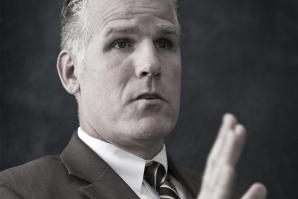Call it a recession, a realignment or a downturn. Whatever you call it, our current economy is experiencing convulsions most of us have not seen in our lifetimes. Our nation, our state and our region continue to suffer from a sputtering economy and painfully high unemployment.
Here in the Capital Region the picture is particularly bleak. More than 145,000 people have already lost their jobs. Our average unemployment rate is greater than 12 percent — higher than the state average — with some parts of the region seeing jobless rates as high as 19 percent.
Even the most optimistic economists predict the region won’t see unemployment fall below 10 percent until at least the end of 2015. A key reason is the fact that our dominant employers — government, construction and professional services — have been among the hardest hit sectors.
Yet during the past four years of recession, we seem to have focused all too much on what government — particularly at the federal and state level — should do to create employment and rebuild our economy.
That makes no sense to me. For one thing, government only takes dollars from the productive part of the economy and reallocates it to other, often less-productive parts of the economy. For another, we can’t wait for some slow trickle down. The situation is simply too urgent.
If we’re going to pull out of these dismal times, we have to start here and we have to start with the private sector — the experts in job and wealth creation. And at last we have a regional initiative to do just that, thanks to leaders from the Metro Chamber, the Sacramento Area Commerce & Trade Organization (SACTO), Valley Vision and the Sacramento Area Regional Technology Alliance.
Even the most optimistic economists predict the region won’t see unemployment fall below 10 percent until at least the end of 2015.
Dubbed “Next Economy: A Capital Region Prosperity Plan,” this collaborative effort is aimed at producing a roadmap to those industry clusters where we can effectively build on our region’s strengths and most quickly create jobs.
Companies in the same sector gain from being located near one another and connecting to resources such as universities. Over time they attract other firms to support them and — voila! — the region becomes a hub for, say, cyber security, as San Antonio is striving to do.
Our region has taken hesitant steps in this direction before and had some success in developing a focus in clean energy. But we have not yet had the vision, focus or energy to aggressively pursue and build sectors that are major job creators.
What’s different now? Urgency, for one thing. Many parts of the state are seeing early signs of recovery. We are not. In fact, things are apt to get worse because the cash-strapped state government is poised to lay off 2,000 more workers in Sacramento.
Business leadership is another factor. Never before have we seen such a broad-based public/private partnership led by business leaders — the ones who really know how to drive job creation and investment.
And, finally, there is clear recognition that our regional economy is unlikely to ever be the same. By the time we see recovery, an estimated five years from now, the world will have changed. We will have fallen even further behind and lost uncounted opportunities.
Unless, of course, we take aggressive steps now to change,
charting new routes to economic growth. That is exactly what
leaders of the current effort intend to do; I urge
you to join them in working to create our region’s next
economy.
Recommended For You

Vision Quest
Davis seeks a plan for its future personality
Doby Fleeman can feel the ground shifting. He can almost hear the
low rumble of engines.
“The steamrollers are on the move,” says Fleeman, manager of the
Davis Ace Hardware Co. “It’s like we’re on tectonic plates.
There’s a change in the wind.”

Realign. Redevelop.
Counties director Matt Cate thinks California is righting its course
No one can accuse Matt Cate of avoiding the hard jobs. During his four years at the helm of California’s state prisons, he guided the system through some of its toughest times, including historic budget cuts and the implementation of Gov. Jerry Brown’s controversial 2011 realignment plan, which shifted tens of thousands of offenders to local jails and parole supervision.


